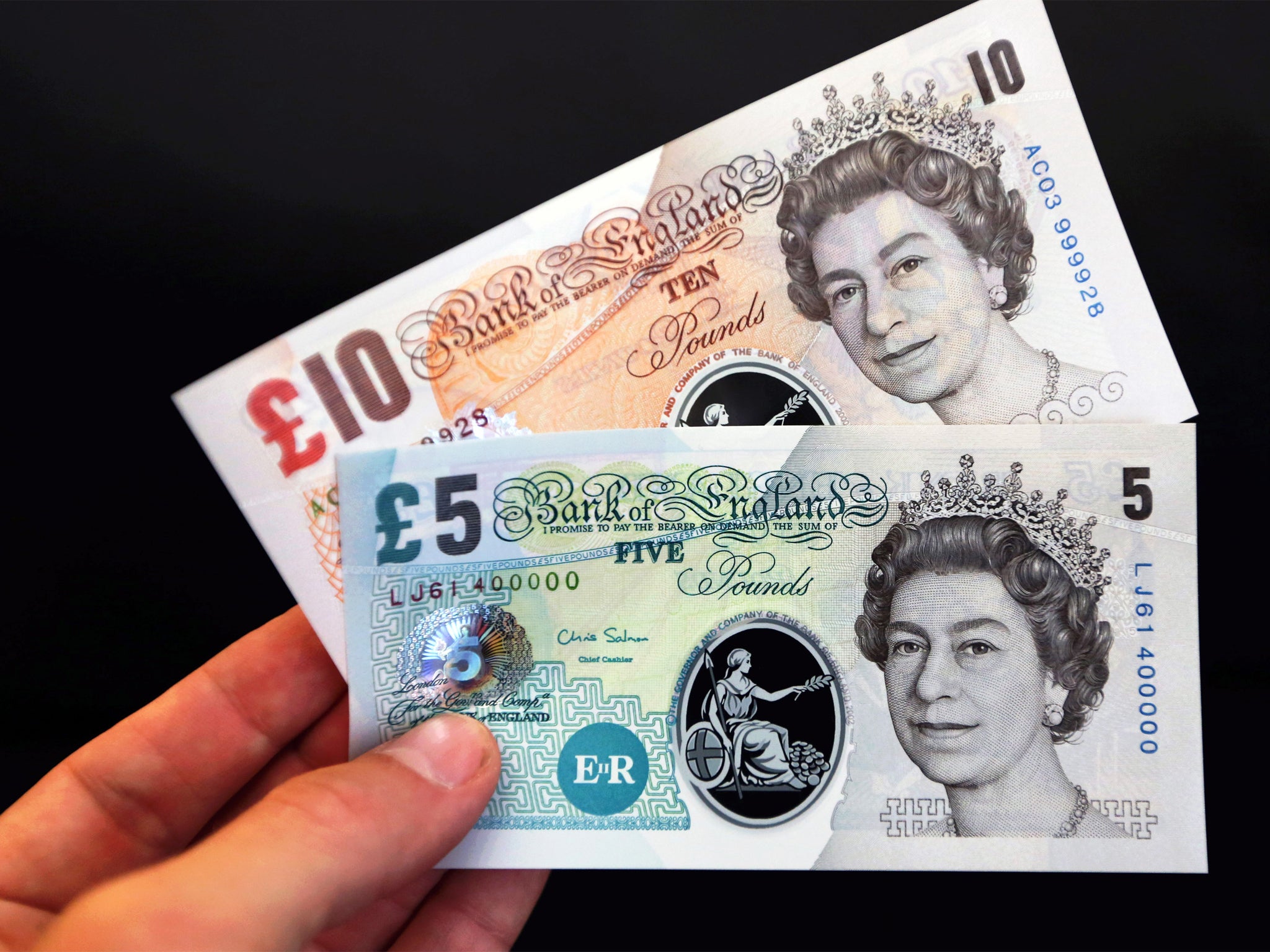Filthy lucre: Bank of England's new plastic notes provide ideal environment for nature's nastiest bacteria

Filthy lucre just got a new meaning. Plastic notes of the type chosen this week by the Bank of England as the next generation of paper money have been found by researchers to be the host of choice for some of nature’s nastiest bacteria.
A study of the survival rates of microbes such as E.coli and the MRSA superbug when placed on seven different currencies has found that they thrived best on money printed on the plastic polymer banknotes earmarked to be introduced in Britain in 2016 following a public consultation.
The research by Dutch and Turkish scientists pinpointed the Romania leu, which is made from the same material selected by the BoE, as the most hospitable environment for the tested bacteria, which lasted for a minimum of six hours on the plastic notes.
In the case of MRSA, the bug was still detectable on the banknotes after 24 hours. The researchers recommended washing hands after touching banknotes but underlined that their findings did not mean the plastic money represented a particular health hazard.
The BoE announced this week that after a three-year study of different types of banknote it was supporting a swap from paper to plastic notes on the basis that they were cleaner, more secure and more durable than the existing money.
A two-month consultation has been launched ahead of a final decision in December and the potential introduction of the first polymer note in 2016 with the new £5, featuring Sir Winston Churchill.
The Turkish and Dutch researchers found that bacteria was significantly less adept as surviving on the other currencies it tested - the Euro, the US dollar, the Canadian dollar, the Moroccan dirham, the Croatian kuna and the Indian rupee, all of which are printed on different materials including the cotton-linen fibre currently used for English and Welsh fivers and tenners.
But although bacteria survived for longer on polymer notes, the scientists said it did not mean that the new money would be a public health menace, pointing out that the notes are a means of moving bacteria around rather than causing human infection.
Dr Habip Gedik, of Istanbul’s Sadi Konuk Research Hospital, who conducted the study with Dutch counterparts, said: “Banknotes containing plastic substances are more likely to carry and transmit bugs. But this does not mean banknotes without plastic never carry or transmit bugs, or that plastic notes are a big public health problem.
“Banknotes are a small part of the transmission process, not a big part of it. There are other factors such as other people, pollution, poor hygiene. We never become ill just taking bugs from banknotes. But we should take into account that we can be contaminated and we should clean our hands after touching them and other probable contaminated material.”
The study, highlighted by the New Scientist, was based on sterilised banknotes which were coated with bacteria and their subsequent survival time.
A second test also spread E.coli and a common bacteria, Staphylococcus aureus, on euro, leu and US dollar notes before asking volunteers to rub their hands on the money to discover whether the microbes transferred to their hands.
Perhaps to the distress of those who consider the euro at least economically toxic, none of the bacteria tranferred onto the hands of those who held the European common currency, while both types were found on the skin of those who handled the plastic leu.
The BoE declined to comment on the research, saying it stood by the findings of its own research that the plastic notes would be cleaner than their paper predecessors.
A senior British academic said his own research into bacteria on banknotes and coins showed that the quantities of bugs found on money was comparable to other daily objects and highly unlikely to amount to an infectious dose.
Professor Anthony Hilton, head of microbiology at Aston University, said: “Plastic banknotes present no greater risk that any other plastic object from a plant pot to a credit card. I don’t think there is going to be a spike of infections as a result of the introduction of plastic banknotes.”
Join our commenting forum
Join thought-provoking conversations, follow other Independent readers and see their replies
Comments
Bookmark popover
Removed from bookmarks